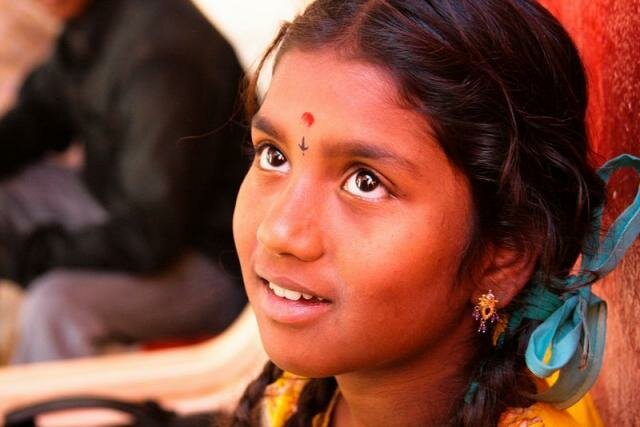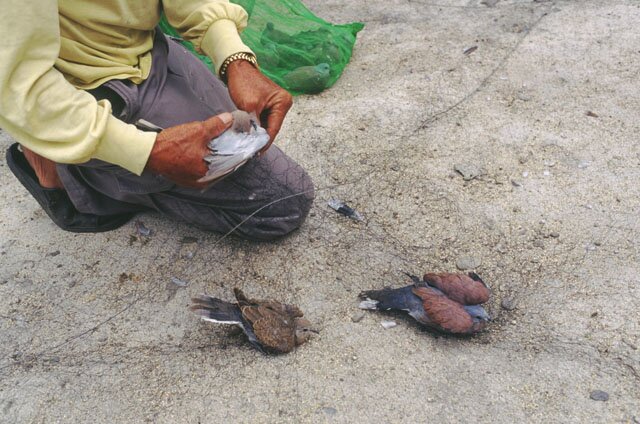BROWSE COUNTRIES/ TERRITORIES
Homeless and on the run in Pakistan's paradise
Overnight, more than two million in the "Switzerland of the East" find themselves homeless in their own country as the Pakistani government wages an all-out war against the Taliban.
Fifteen-year-old Ismail Khan considers himself lucky. At least he has a job at the nursery. But life has otherwise turned upside down for the refugee of Swat Valley. Two weeks ago, he was a carefree student; now he is the family’s sole breadwinner. His peaceful hometown, once a tourist haven, has become a full-blown battlefield.
Ismail is part of Pakistan’s largest exodus since the split of the Indian subcontinent in 1947. Some 2.4 million refugees have poured out of the scenic Swat Valley and its surrounding towns ever since the government declared an all-out war against the Taliban, following the breakdown of a peace deal in May.
The scrawny young man remembers helicopter gun ships firing onto his village, destroying houses and shops. The army had surrounded his village when he and his family of 40 fled.
“We walked for four to five miles to catch our relative’s truck (to the capital Islamabad). We paid 8,000 rupees (US$99).” Normally such a ride costs 50 rupees.
Because refugees such as Ismail are not officially registered, their problems remain largely ignored.
“The government is not providing adequate relief,” says Rayat Ullah Khan, 36, who heads a Swat-based NGO, Female Human Rights Organization (FEHRO).
So far, his organisation has helped 1,280 refugee families in the capital, out of an estimated 20,000 seeking asylum there. But his funds are drying up fast, and Rayat thinks there is a deliberate government policy to keep relief funds out of the capital.
“The government is afraid that if the refugees gather in large groups here, protests might break out in the capital,” Rayat says.

Wives and widows of former soldiers protest against Swat operations. Many accuse the government of unfair dismissal, and even abduction of soldiers who are suspected of having links with extremists in the past two years.
Good Samaritans
To address the problem, he has penned a petition to the Supreme Court, demanding organised aid relief to refugees living with host families in Islamabad and its twin city, Rawalpindi.
“Some 300,000 refugees are living with host families in Islamabad, and more than half are children who have been out of school since November 2006,” Rayat writes in his petition.
“The youth and men experience arbitrary arrests under the garb of anti-terror crackdowns… The women and children are suffering from various health and nutritional ailments which are easily avoided if the millions of dollars in relief aid are shared…”
Amidst the tragedy, some are luckier than others. There are tales of good Samaritans who have extended a helping hand to others. For two weeks already, Osman Ullah (not his real name), who lives Mardan city, has opened his home to more than 30 strangers.
Even as his own coffers run dry, Osman refuses to tell his guests to leave. Confronted by such circumstances, Osman, like many of the host families, have sold his cows at a fraction of their value to raise funds. Despite the difficulties, Osman will not turn his guests away – such is the culture of Pashtun hospitality.
Safe havens in faith
It is against this backdrop that Reverend Peter Majeed, bishop of the Northern Diocese Mardan Church of Pakistan, extended an open invitation to the displaced people of Swat pouring into the second city of the North West Frontier Province.
The church now houses 350 refugees. But once the pews in the prayer hall are removed, says the bishop, it can accommodate up to 700 people.
The opening of doors at religious places has also provided a cultural exchange otherwise quite unthinkable in times of peace.
“We have a mini Pakistan here – Muslims, Hindus and Christians living under one roof,” quips Reverend Peter. “We are barely coping, as it is the first time we’re hosting refugees. Preparing food for so many people requires manpower and funds, which we are short of.”
Over at the Sikh temple Gurdwara Siri Punjab Sahib, Balakram Singh, 55, a Sikh refugee from Swat, is feeling at home. Barely a month after hosting 6,000 pilgrims for the holy Vaisakh festival, the temple is now hosting some 4,000 Sikh refugees. In the blistering summer heat, men are bathing in the crystal clear waters of the moat surrounding the prayer hall. Children play cricket at a quadrangle. It is hard to believe these are refugees – the mood is almost celebratory. The closely knit community, as it seems, is no stranger to communal living. The whole place is powered by Sikh volunteers.
“We are much better off here, I know. We are concerned about those living in the tent camps. We have shared our supplies with them, and we count our blessings from Babu Guru Nanak (founder of Sikhism),” said Balakram.

Refugees take a dip in the spring at a Sikh temple in Hasanabdal. Some 3500 Sikhs and minorities stay in the temple. Life here is generally better than in tent villages.
Tent cities
Damning tales of “tent cities” have spread far and wide, and the stories are not unfounded. Conditions were terrible in the beginning as aid agencies struggled to set up camps at short notice. Problems such as water and food shortage, overcrowding, and even snakebites, are the common experience of some of the camps’ earliest settlers.
But the situation has vastly improved. In Swabi, the Red Crescent has even set up two air-conditioned tents used as emergency hospital wards.
Still, the taboo of living in open tent camps is hard to dispel. Almost all of the refugees are Pashtuns, whose women observe the practice of Purdah, or veil. Many cover their body from head to toe in a hejab. Living in such an exposed environment is alien and frightening to them.
Latif Ullah, 52, a carpenter, fled to Sheik Yasin camp, a “tent city” in its own right, with more than 1,650 tents housing 15,000. For the first week, Latif’s family – five adults and five children – squeezed into a 9-square-metre tent, meant to house only three.
Latif’s list of complaints went on: shortage of water, toilets and money. As he passed yet another plastic water barrel, he could not suppress his emotions: “Look, look at the water! Filthy water comes from these strange-looking barrels. In Swat, the water is like from jana (heaven)!”
Many refugees, like Latif, have yet to accept the fact that they are refugees in their own land. Not unlike victims of natural disasters, they were yanked from their everyday lives by an abrupt military operation, which turned their peaceful homes into a full-blown battlefield overnight.

Farmer Aqal Wasir, 45, stares at the tent city of Shah Mansoor, in Swabi. He fled from Chaktara with his wife and seven children, the youngest less than a year old.
Finding comfort
Amidst adversity, aid workers and refugees at these camps struggle to bring some sense of normalcy into their lives. Tea, a Pakistani staple, is served daily at 4 pm. Displaced teachers banded together to continue giving classes to children. And refugees have volunteered their help to build community halls and to attend to the sick.
At the Sheikh Yasin camp in Mardan, the common complaint is not about the Taliban or the Pakistan government, but of the weather. So fans have been distributed to the displaced, as each tent now gets electricity.
At Jalozai camp, now home to 100,000 displaced Pakistanis, a salesman waits for business in his air-conditioned cabin, a mobile shop set up by Warid Mobile. It serves 30 to 35 customers a day, giving 30% discount on all items; the best-selling goods are the pre-paid service top-up cards.
Already, signs of permanence have sprung up everywhere in these tent cities – brick and mortar food stores, large prayer halls, and even children’s playground. Although these facilities bring relief to an otherwise frustrating existence, they point to a possibility of long-drawn conflict. The army has constantly trumpeted it triumphs in the media, but no one really knows how long this will last.
Human Cost of War
The conflict is claiming more lives outside Swat Valley. Taliban militants have retaliated with suicide attacks and bombings in major cities, in a bid to turn the public against the war.
Since the military operation was launched in Swat, terrorists have targeted the northwestern capital of Peshawar six times, with car bombs and suicide attacks killing around 50 people and injuring over 300.
Cinemas, CD shops, and electronics bazaars have been prime targets, keeping with the Taliban’s intolerance of modern indulgences. Apart from the casualties, the attacks have cast a shadow of uncertainty on hundreds of thousands of Peshawarites.
The human cost of war, though, is far more certain. More than 2 million people have been forced to live as refugees in their own country.
Only a handful of war-torn countries, like Sudan, Iraq, and Colombia, have more internal refugees.
The speed of the displacement at its peak – up to 85,000 people a day – was matched only during the 1994 genocide in Rwanda. Whoever the ghazi (“victor”) will be when the dust settles, what is certain is this: Swat has become one of the biggest sudden refugee crises the world has ever seen.
And the irony of it all: Pakistan is no stranger in dealing with refugees.

Sumera, 5, fled with her extended family of 40 from Swat to Islamabad on a truck. They pooled all their money to rent two houses, but have no more money to buy food.
For more than 20 years, Pakistan played host to some 3 million Afghan refugees displaced from the decades of war following the 1979 Soviet Union invasion of Afghanistan.
By 2001, Jalozai camp alone had taken in some 300,000 Afghan refugees. Following the fall of the Taliban in Afghanistan, the camp was officially closed and cleared of its original inhabitants by 2005.
Less than four years later, the tent city sprang alive once more. But this time, the refugees were Pakistanis.
“A few years ago, when I say I’m from Swat, people would ask me for my contact number and said they would call on me when they come visit. But now, when I say I’m from Swat, people think I’m Taliban and are afraid of me,” says journalist Ehsan Haqqani.
Photos by Edwin Koo
*Edwin Koo's "Paradise Lost: The Fallout of the Swat Valley" is now available on iTunes. Grab a copy today.
Related Stories:
Login or Register
Edwin Koo is a Singaporean photojournalist based in Nepal. He maintains a keen interest in the development of Nepal as an infant republic, and also issues pertaining to the human condition across South Asia. Currently represented by US-based Zuma Press and Koo also contributes to Singapore-based asia! magazine and Taiwan-based Rhythms. In March this year, he held a joint exhibition with fellow photojournalist Debby Ng in Singapore called "Life of My Sisters", showing how education is changing the lives of underprivileged girls in Nepal. Prior to Nepal, Edwin worked with Singapore's national broadsheet The Straits Times and tabloid Streats, where he was staff photographer for five years. He holds a Bachelor of Communications degree from Singapore's Nanyang Technological University.
- Asian Dynasties and History
- Conservation of the Environment
- Definition: Culture
- Economy and Economics
- Food and Recipe
- Geopolitics and Strategic Relations
- Health and Body
- Of Government and Politics
- Religion and Practices
- Social Injustices and Poverty Report
- Society, Class and Division
- Unrest, Conflicts and Wars































 Another Point
Another Point From Jerusalem to the West Bank
From Jerusalem to the West Bank
Comments
Post new comment